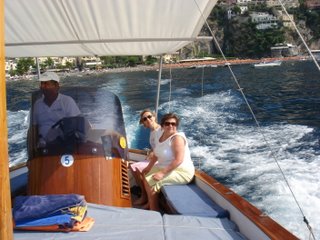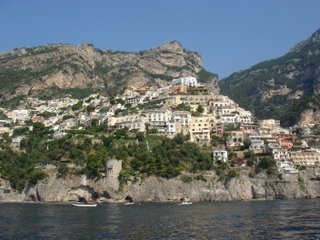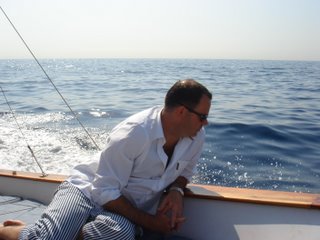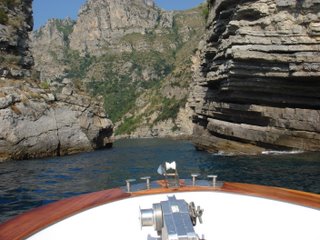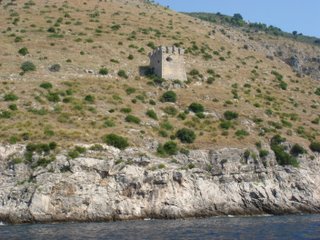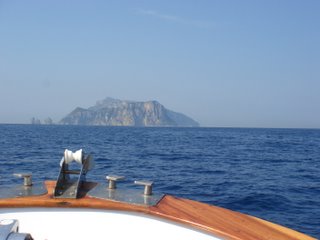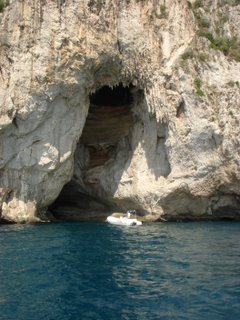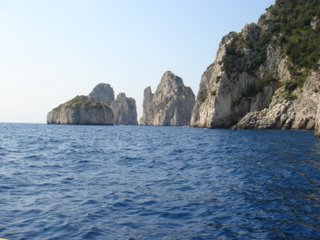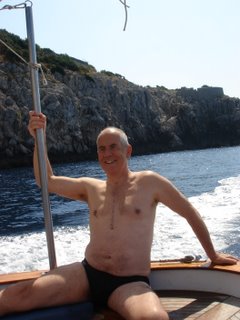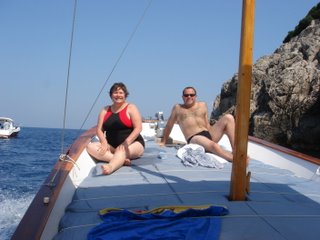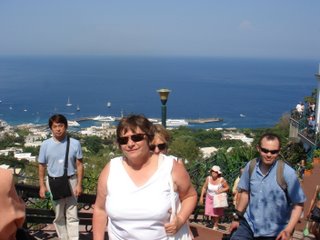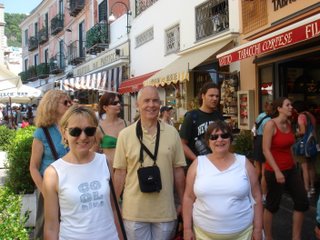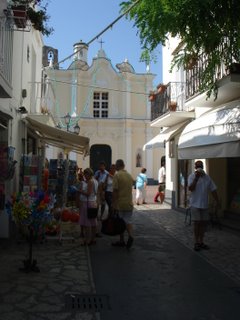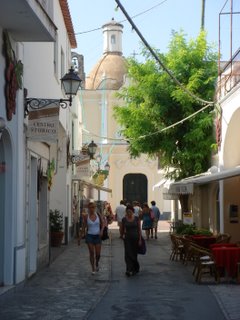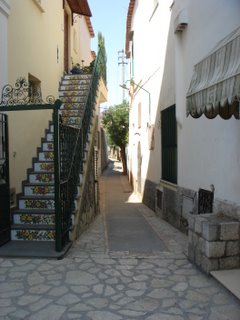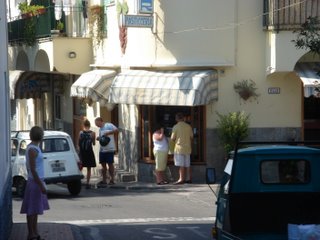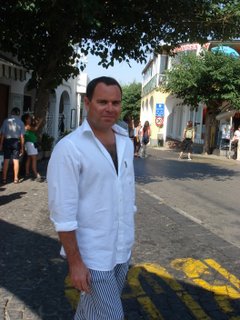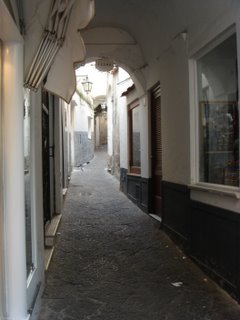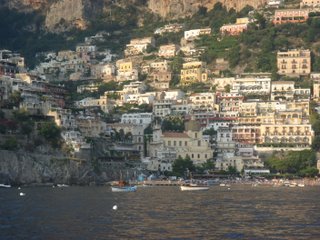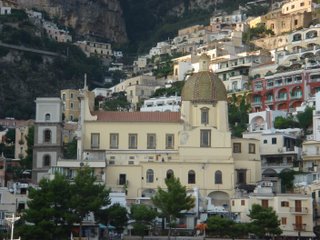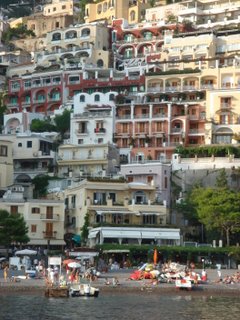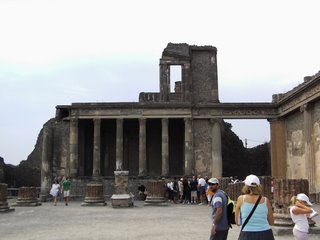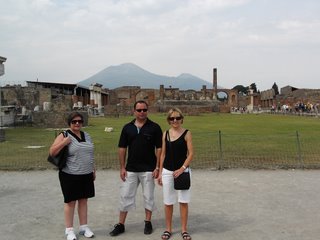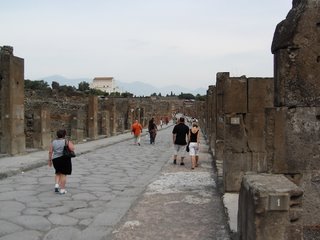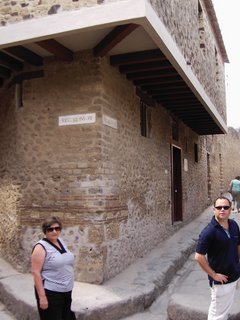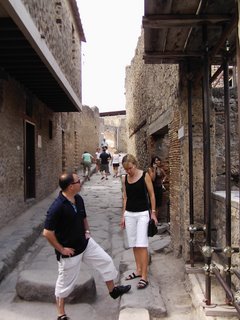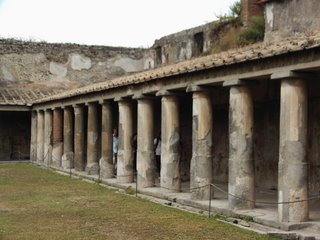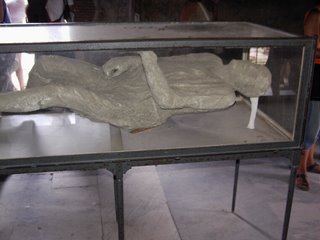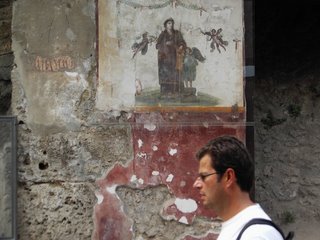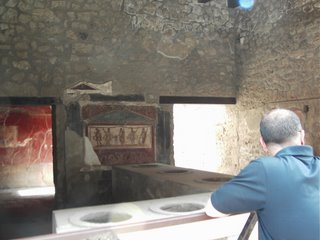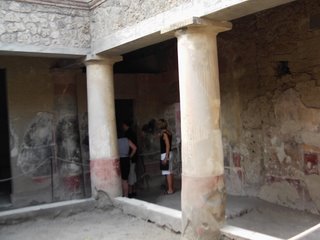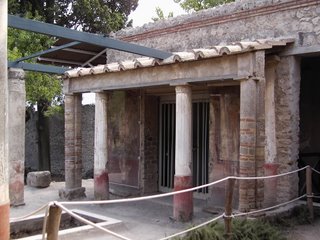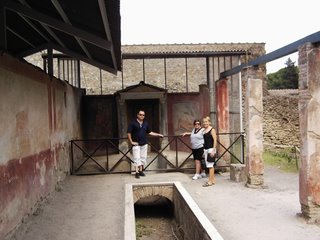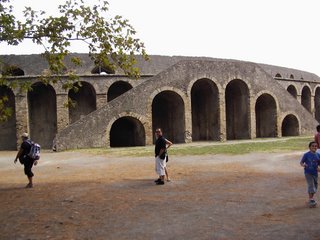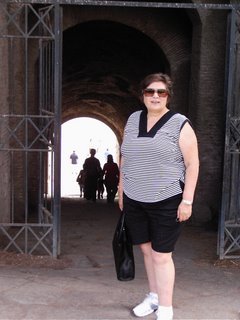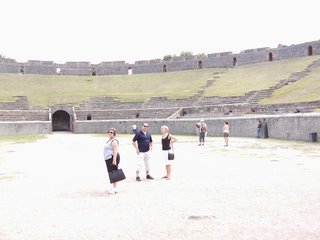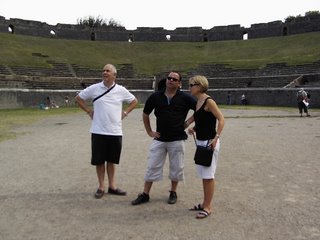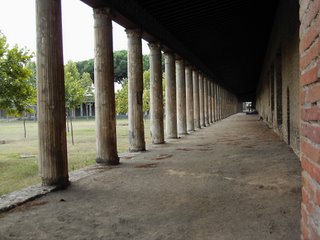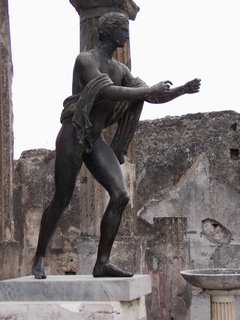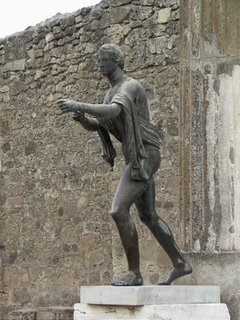Fortunata cooks dinner
We were all exhausted from our trip to Capri and had another late morning. Sheila and I had organised Fortunata to cook dinner for the evening and Fortunata started in the early morning with Sheila watching occasionally to see how Fortunata was cooking in the Italian way.
I went down town with Sheila later in the day to see if the young lady in the photography shop might be able to recover the photos that I had mistakenly deleted.
“Sorry Signor, I can not do, you must be more careful in Future”!
“Grazie” I replied, but not feeling very thankful for either the result or the advice.
While we were near the shops Sheila took the opportunity to purchase a Positano plate and encourage me to buy a shirt.
href="http://photos1.blogger.com/x/blogger/7450/1861/1600/386844/DSC00749.jpg">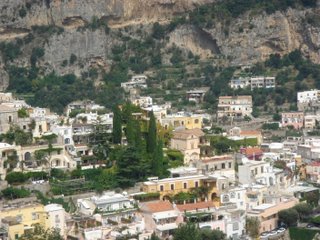 Our ivy covered villa
Our ivy covered villa
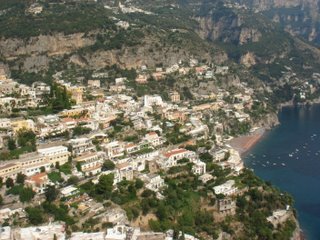 A closer view of our villa just to the right of the pencil pines
A closer view of our villa just to the right of the pencil pines
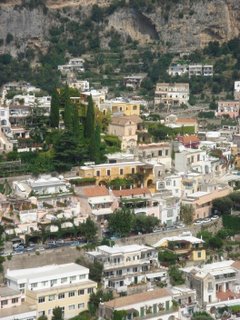 In the late afternoon Adam, Rosalind and I went for a walk around to the next headland and looked at the view of Positano from a scenic spot where there was a statue and a small car park that is very popular with visitors.
In the late afternoon Adam, Rosalind and I went for a walk around to the next headland and looked at the view of Positano from a scenic spot where there was a statue and a small car park that is very popular with visitors.
Some of the pictures we took from that place are as follows:
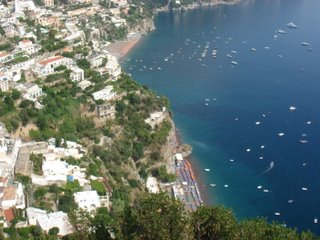
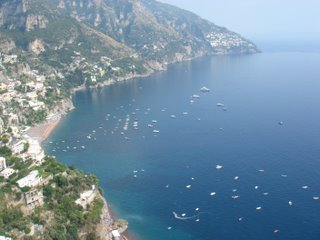
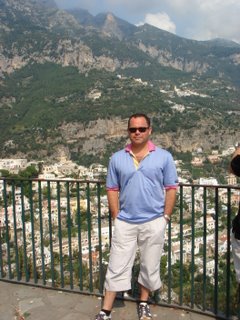 Adam
Adam
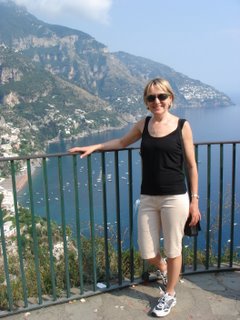 Rosalind
Rosalind
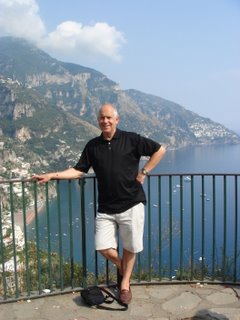 John
John
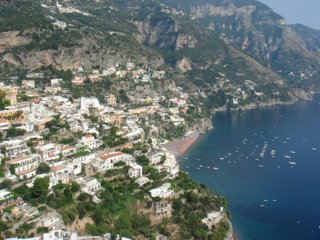 In the top left of this picture you can see the little village that Adam went to on one of his little jogs.
In the top left of this picture you can see the little village that Adam went to on one of his little jogs.
When we returned to the villa Sheila was supervising Fortunata making lasagne and tiramisu. Fortunata was pulling pieces of some minced meat from a bag and scattering it across a layer of her lasagne and Sheila was trying to find out what type of meat it was, but neither Sheila’s Italian or Fortunate’s English shed any light on the matter. I decided to interpret and my “oink, oink”, produced a very similar “oink, oink” and much smiling and nodding of her head, from Fortunata. So it would seem to me that animals all speak the same language which ever country they are from; scary thought that one.
We were shown the various dishes that had been prepared and the antipasto looked superb, it included smoked peppers, lots of olive oil and the marinaded anchovies. The marinade is just lemon juice and olive oil, but the end result if fantastic.
The lasagne and the tiramisu were both in different large dishes but each about half a metre long and six inches deep.
The tiramisu was excellent and lasted us quite a few days. The same however could not be said about the lasagne it was very, very dry containing no tomato or béchamel sauces. It was a bit like nachos, but even drier. We all attempted some, but it was too crunchy with very little taste and son after dinner I did the drop at the nearest waste transfer station so that there was no evidence left that we had not enjoyed the lasagne when Fortunata inquired in the morning. Well I think she inquired as I guessed what she asked and rolled my eyes while rubbing my stomach and exclaiming “buono”.
This was the first course prepared by Fortunata and the marinaded anchovies just to the left of the breadbasket were my favourite.
We ate in the loggia as we felt that the dinner deserved more of a formal setting than the rooftop patio.
We all had a relatively early night as Adam had planed an excursion to Paestum the following day.
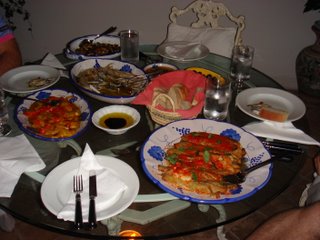
I went down town with Sheila later in the day to see if the young lady in the photography shop might be able to recover the photos that I had mistakenly deleted.
“Sorry Signor, I can not do, you must be more careful in Future”!
“Grazie” I replied, but not feeling very thankful for either the result or the advice.
While we were near the shops Sheila took the opportunity to purchase a Positano plate and encourage me to buy a shirt.
href="http://photos1.blogger.com/x/blogger/7450/1861/1600/386844/DSC00749.jpg">
 Our ivy covered villa
Our ivy covered villa A closer view of our villa just to the right of the pencil pines
A closer view of our villa just to the right of the pencil pines In the late afternoon Adam, Rosalind and I went for a walk around to the next headland and looked at the view of Positano from a scenic spot where there was a statue and a small car park that is very popular with visitors.
In the late afternoon Adam, Rosalind and I went for a walk around to the next headland and looked at the view of Positano from a scenic spot where there was a statue and a small car park that is very popular with visitors.Some of the pictures we took from that place are as follows:


 Adam
Adam Rosalind
Rosalind John
John In the top left of this picture you can see the little village that Adam went to on one of his little jogs.
In the top left of this picture you can see the little village that Adam went to on one of his little jogs.When we returned to the villa Sheila was supervising Fortunata making lasagne and tiramisu. Fortunata was pulling pieces of some minced meat from a bag and scattering it across a layer of her lasagne and Sheila was trying to find out what type of meat it was, but neither Sheila’s Italian or Fortunate’s English shed any light on the matter. I decided to interpret and my “oink, oink”, produced a very similar “oink, oink” and much smiling and nodding of her head, from Fortunata. So it would seem to me that animals all speak the same language which ever country they are from; scary thought that one.
We were shown the various dishes that had been prepared and the antipasto looked superb, it included smoked peppers, lots of olive oil and the marinaded anchovies. The marinade is just lemon juice and olive oil, but the end result if fantastic.
The lasagne and the tiramisu were both in different large dishes but each about half a metre long and six inches deep.
The tiramisu was excellent and lasted us quite a few days. The same however could not be said about the lasagne it was very, very dry containing no tomato or béchamel sauces. It was a bit like nachos, but even drier. We all attempted some, but it was too crunchy with very little taste and son after dinner I did the drop at the nearest waste transfer station so that there was no evidence left that we had not enjoyed the lasagne when Fortunata inquired in the morning. Well I think she inquired as I guessed what she asked and rolled my eyes while rubbing my stomach and exclaiming “buono”.
This was the first course prepared by Fortunata and the marinaded anchovies just to the left of the breadbasket were my favourite.
We ate in the loggia as we felt that the dinner deserved more of a formal setting than the rooftop patio.
We all had a relatively early night as Adam had planed an excursion to Paestum the following day.

